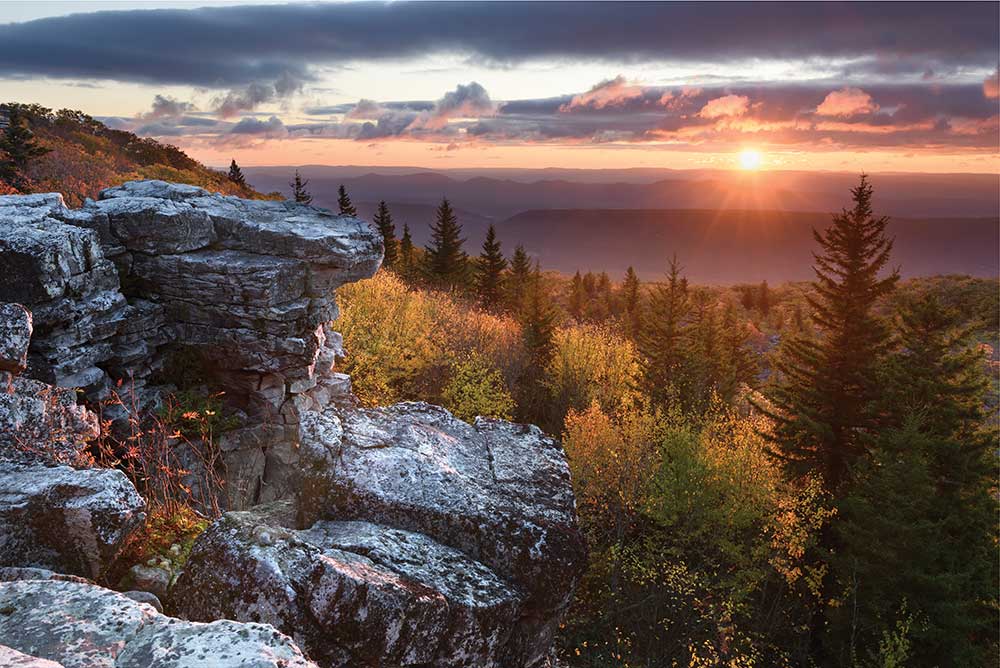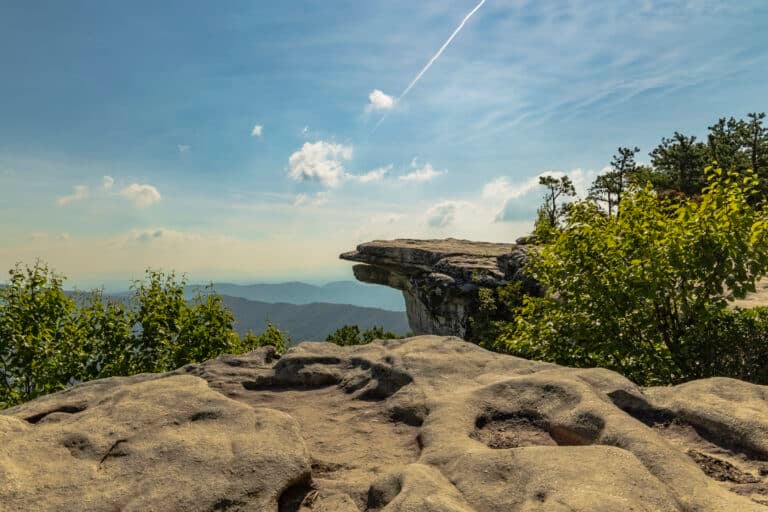I love looking at maps—especially the green-shaded areas. That’s where most adventures happen. At first, I thought all of the green spaces on maps were protected. They were public lands, shared spaces for all, part of a celebrated and cherished American land legacy of conservation. But then I learned: not all public lands are the same.
It turns out that there are three different kinds of federally owned public lands in the East: national parks, national wildlife refuges, and national forests. Their names can be misleading. For example, national wildlife refuges are popular hunting grounds, and national forests are heavily logged.
Most of the public lands in the East are national forests. If you’ve been hiking, biking, paddling, or climbing on public lands recently, there’s a good chance it was in a national forest like the GW-Jeff in Virginia, the Monongahela in West Virginia, or the Cherokee in Tennessee. We only have three major national parks in the Southeast: Shenandoah, the Smokies, and the Blue Ridge Parkway that connects them. There are state parks and forests, too, but they are typically much smaller.
National parks are much more protected than national forests. Logging, mining, drilling, and pipeline construction are not allowed in national parks. However, national forests permit all of those things. National forests allow private companies to cut down trees, mine for coal, drill for oil and gas, and bulldoze pipeline routes.
Those green spaces on the map suddenly seem a lot more vulnerable. It’s difficult to untangle the laws and rules that guide our public lands. Yet we own them, and we can decide to change the way they are managed.
We have such an opportunity right now in North Carolina’s Pisgah-Nantahala National Forest. It is the secondmost popular national forest in the country, attracting nearly 7 million visitors annually. Over 95% of them are hikers, mountain bikers, paddlers, climbers, and other nature-loving enthusiasts.
The Forest Service has just released a draft plan that will guide the next 30 years of forest management for the Pisgah-Nantahala. Essentially, it is a blueprint that will decide how much of the forest is logged and how much is protected. The draft plan includes substantially increased logging for the Pisgah-Nantahala.
Is your favorite trail or trout stream in an area that will be logged or protected? You can view maps, learn more, and submit comments to the Forest Service at forestkeeper.org, iheartpisgah.org, or southernenvironment.org. Your voice is crucial in shaping the next three decades of this one-million-acre forest.
And here are ten somewhat surprising facts about national forests that can help us all better protect the places where we play.
1. National forests are the only federal lands managed by the Department of Agriculture. The Department of Agriculture traditionally has viewed trees as crops and prioritized timber harvests on national forests. National parks and national wildlife refuges are managed by the Department of the Interior, which tends to prioritize recreation and conservation.
2. Logging in national forests is increasing. Trump and the U.S. Forest Service are seeking massive increases in national forest logging, and they are stripping away laws and rules that limit logging. They also are removing scientific review and public input from many logging projects.
3. National Forests are legally required to balance five uses: recreation, timber, range, wildlife, and water. The U.S. Forest Service has traditionally focused more on timber than other uses, but an overwhelming majority of forest users visit national forests for recreation, water, and wildlife.
4. Recreation generates far more income than timber harvests in national forests. Recreation in national forests contributes 30 times more income and creates 38 times more jobs than logging. Less than 3% of jobs in rural communities are linked to logging on public land, while 75% of jobs in rural communities come from recreation based on public lands.
5. National forests supply drinking water for over 20% of Americans. Over 66 million Americans get their drinking water from national forests, making national forests the largest municipal supplier of drinking water in the country. Forest soils absorb rain and snow like sponges, act as a natural filter, and replenish underground aquifers. Water flowing from National Forests also supports valuable ecological communities—wetlands, lakes, rivers, and streams.
6. Forests provide clean, healthy air. Forests pump out oxygen we need to live and absorb the carbon dioxide we exhale or emit. Forests also improve air quality: they act as natural filters that absorb pollutants and clean the air. Trees absorb a wide range of airborne pollutants, including carbon monoxide, sulfur dioxide, and nitrogen dioxide. In the U.S. alone, forests are estimated to save 850 lives per year and $6.8 billion in total health care costs just by removing pollutants from the air.
7. National forest logging is paid for by taxpayers and loses hundreds of millions of dollars annually. The Forest Service sells our national forest timber to private timber companies. It then subsidizes the logging project using taxpayer money to plan the cuts and build the road infrastructure for the private timber companies to use. Our national forests contain eight times as many miles of roads as our interstate system.
8. Logging makes wildfires burn hotter and faster. Burn severity tends to be highest in areas with more logging. Logged sites are filled with dried-out debris and higher winds that are far more flammable than older, mature forests. Opening the canopy dries out the forest floor and increases wind speeds, both of which accelerate fire. In addition, logging often results in the spread of more combustible invasive species. Prescribed burns, targeted forest thinning around structures, and emergency firebreaks are effective strategies to protect communities and residences, but large-scale logging only makes wildfires worse.
9. The Forest Service has proposed rules to eliminate public comment and scientific review from many of its logging, mining, and pipeline projects. All timber sales less than 4,200 acres would not require any public notice. The proposed rules would cut the public out of public lands. Forest Keeper works to ensure that science and the public voice are not silenced.
10. National forests are far more valuable standing than cut down. Most of the country’s old-growth forests, rare species, scenic vistas, recreational opportunities, and drinking water supplies are found in national forests, generating revenue for local communities and a sustainable future for everyone.








